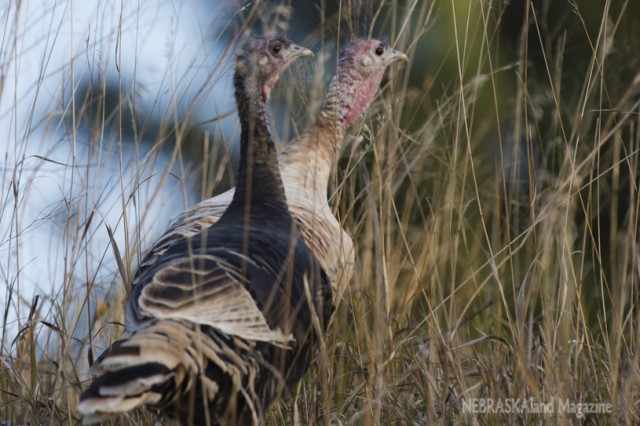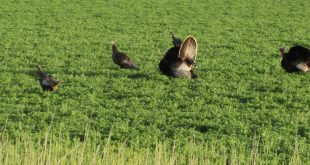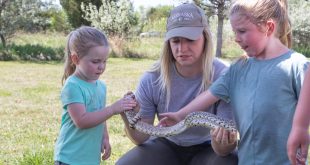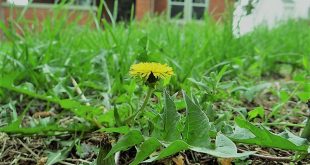
As I was driving through the Nebraska National Forest southeast of Chadron on Thursday, a pleasant surprise greeted me as I rounded a bend in the road. Discovering a flock of wild turkeys is certainly no cause for amazement these days but one bird predominantly covered by white feathers stood out among the group.
The big bird didn’t give me much time to get a photo before it disappeared over the horizon, but you should be able to see that this turkey is different from others. The distinct white plumage of the bird is likely what is known as the “smoky gray” color phase, an occurrence caused by recessive genes.
In an online article, Dr. James Earl Kennamer, chief conservation officer for the National Wild Turkey Federation, explains the situation and points to the research of James and Steven Kazmierski. The father-and-son duo penned a detailed article titled “Turkey Plumage: Color and Composition.”
When people see a bird in the smoky gray phase, they often mistakenly identify it as an albino or a cross with a domestic breed.
Kennamer reports that albinism is extremely rare in turkeys and birds such as this are not truly albino. A close look reveals that while the brown and bronze may be missing, many of the same black markings as other wild turkeys exist on the birds’ feathers.
And interbreeding with domestics? The smoky gray phase has been known to occur in flocks that have no contact with domestic breeds, so it’s possible that these birds are born without any help from the barnyard. Most domestic turkeys, after all, are descendants of wild breeds, so the genes responsible for such plumage types still reside in the wild, Kennamer writes.
Jeff Lusk, upland game program manager for the Nebraska Game and Parks Commission, said he has received a few calls this year about smoky phase turkeys and still suspects there might be some interbreeding between wild and domestic birds.
“I’ve been telling the callers that it could be either a true smoky phase or a hybrid wild-domestic. All that matters is whether they think it is cool and worth mounting,” he said.
I’ve heard reports of two hunters who have bagged a smoky gray phase turkey in the past year and this is the second one that I’ve seen and photographed. The other one was roosted last year in Sheridan County between Chadron and Hay Springs well past sundown. Even though the bird was pretty easy to spot, even at night, the photos didn’t turn out. Such genetics surely don’t help a bird when it comes to hiding from predators – especially if there’s no snow on the ground.
With Nebraska’s thriving turkey population, there’s a chance you’ve seen or shot one of these “birds of a different feather,” too. Send your photos to justin.haag@nebraska.gov and I’ll publish them in a future blog post.
 Nebraskaland Magazine
Nebraskaland Magazine



